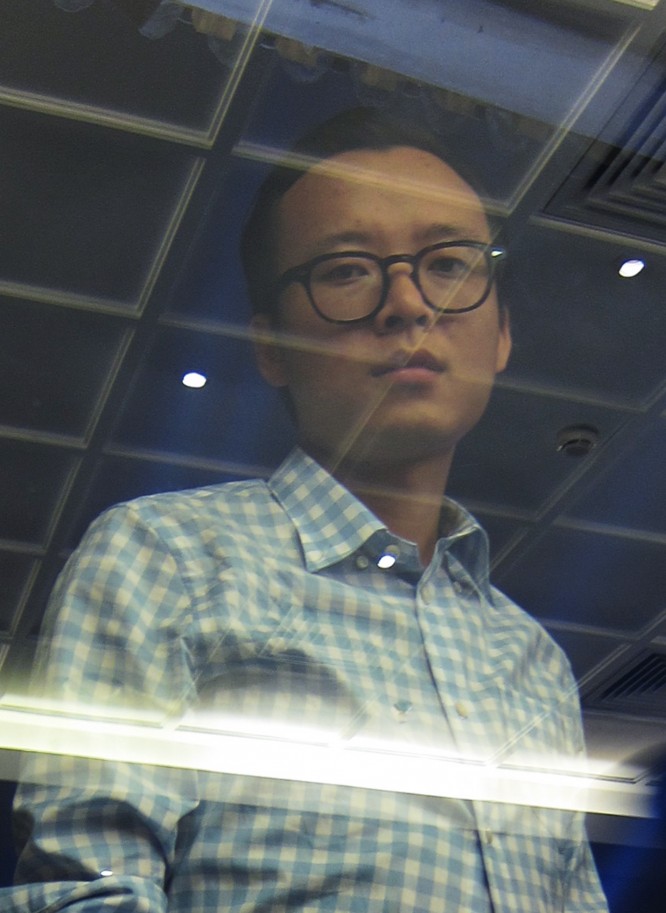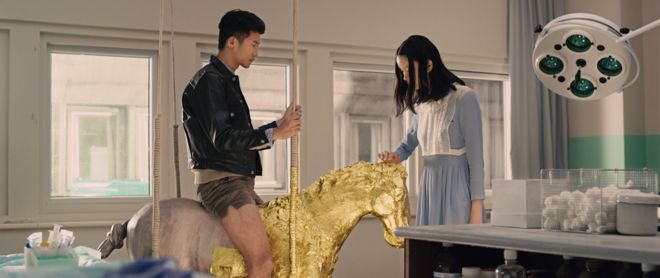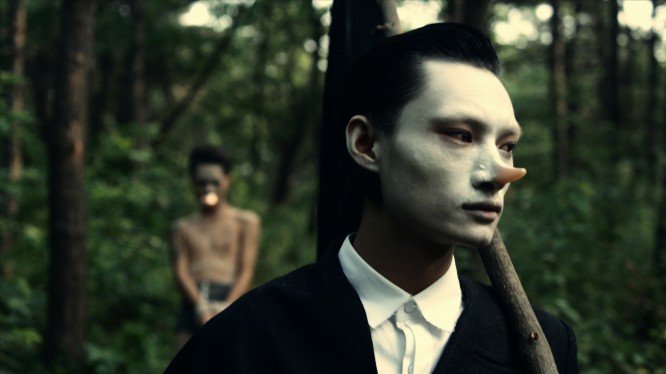31-year-old Huang Ran is a Beijing-based artist who works with different media, including video and installation. A graduate of Birmingham Institute of Art and Design and Goldsmiths College (UK), his work has been shown internationally. This year, however, Huang has decided to take the focus off exhibitions. Randian met him to discuss ideas on belief vs. understanding, the art system and individual practice.
I want to concentrate more on my studio practice. I’m not having any major exhibitions this year—I’ve cancelled these and other distractions. Last year I participated in 15 shows! But you can’t really rely on an exhibition. They bring you different working conditions and scenarios; curators have their egos, and often ask for a new piece. Sometimes, in the context of a group show, people give too much credit to your work by looking at a single example. The system uses you as a raw material, not as an individual element. It’s part of the business and you can’t get rid of it, but I am thinking about how I can respond to that sort of expenditure. One really needs to think about the price of the individuals in this system. No one can say they are truly independent, but you need to think of your whole career and the bigger picture.

黄然
My response is to take all the good and bad as conditions of my practice I have to deal with. It all comes back to the studio, where you have real contact with what you are thinking about. You start to imagine scenarios and how you would respond to them—like mathematics. I try to work so that it makes the system pay a small price. I think that’s a crucial part of individual practice—and not only for artists, but also curators, critics and collectors—they are exhausted, too. People often question the concept of an individual work, but they never really question how the system operates. We are all working under the laws of contemporary art. The question is about questioning. It’s become very interesting in terms of positive transgression and what moves the system forward. But the system can absorb all of this kind of activity. The powerful thing about law is that it is not steady, but always moving and expanding.
It’s also a question of whether you understand or believe in something. I can go to Documenta or the Venice Biennale, and I think I can understand 99% of the work—but is there actually work you believe in? Culture, like religion, has belief rather than understanding at its core. I therefore think of morality in relation to art not in terms of good and bad, right and wrong. It’s about how we establish our collective value system and standards. It’s an attitude towards history. The value of history is always judged through comparison. Things never have value intrinsic to themselves—a piece of work is always measured against other artists’ work, and we ask the question of whether this piece is important to our time. It’s also about who has the power to state this “morality”, how we believe in something, and the mechanisms that achieve this.

黄然,《破坏性的欲望,镇定剂,遗失的清晰》,视频截图,单屏高清录像,彩色环绕立体声,22:00分钟,2012
I use the phrase “individual strategy” a lot. I try to keep a distance in terms of the engagement of my career—thinking about my relationship with exhibitions, curators and commercial galleries and building my own pace of working and confidence. I am an artist, I have to work in my studio—that’s the material I have to use to do what I want. To achieve good studio practice, you have to think differently, sometimes. For example, how do you want to use this time, and for what purpose? It is about working incrementally, in layers, and about how one period feeds into the next. Some young artists think they are going to make a very important work which will change their lives! I don’t know whether that really works, long term.
I am always trying to understand what I really believe in. In general, I believe there are no shortcuts. This year, I feel everyone is always talking about art history—a lot of works and exhibitions are about art history. But you cannot think, “Oh, I’ll catch up on this training and arrive somewhere.” In terms of practice, I think I always believe in my critical thinking. Of course, it’s changing, but I never think one kind of thinking can be thought of as the “right” one.
Overall, I love and hate the environment in which I work. I count everything as material for my practice—as both context and medium; I see whether I can turn these into something else. Now, I’m working on a new film and quite a few other projects—objects, perhaps, rather than installations. I’m happy about not having a show! I only have four or five exhibitions coming up for which I don’t have to produce new work, and I think that’s really good. Some artists think exhibitions put pressure on you to make work, but you shouldn’t need that impetus. You need to generate it yourself and think about that “morality” of creation, without comparison with others. Everyone should push their own limits and language without always working for someone or something in particular.

黄然,《预约悲剧》,视频截图,单屏高清录像,彩色有声,14:56 分钟,2010